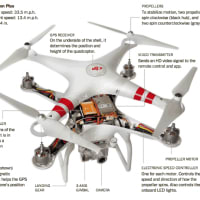Warming Revives Dream of Sea Route in Russian Arctic
温暖化がロシアの北極海航路の夢を復活
地球温暖化がもたらした思わぬ恩恵。極圏のツアーも普通に楽しめるようになるかも知れない。また生ものの輸送には赤道を通らないぶん冷蔵コストも抑えられるのでは? 新しい可能性・・
By ANDREW E. KRAMER
Published: October 17, 2011
ARKHANGELSK, Russia — Rounding the northernmost tip of Russia in his oceangoing tugboat this summer, Capt. Vladimir V. Bozanov saw plenty of walruses, some pods of beluga whales and in the distance a few icebergs.
この夏、ロシアの最北端を回る、彼の大洋巡航タグボートからウラジミル・ボザノフ船長は多くのセイウチと幾つかのベルガクジラの群れ、それに遠方に僅かの氷山を見た。

The tanker Vladimir Tikhonov in the Bering Strait.
ベーリング海峡のタンカー、ウラジミル・チホノフ

The Northeast Passage Opens Up 北東航路が開く

With an icebreaker leading the way, the Vladimir Tikhonov, carrying gas condensate, passed Cape Dezhnev in late August. 砕氷船が進路を導かせて、濃縮ガスを運んでいるウラジミル・チホノフが8月下旬にデズネフ岬を通過した
One thing Captain Bozanov did not encounter while towing an industrial barge 2,300 miles across the Arctic Ocean was solid ice blocking his path anywhere along the route. Ten years ago, he said, an ice-free passage, even at the peak of summer, was exceptionally rare.
工業用バルジ船を2300マイルも北極海を曳航して、ボザノフ船長が木偶あわさなかったのは、航路沿いにあちこちで航行を妨害する固い氷だ。10年前は夏の盛りの時期でも氷を避けて通るのは非常に稀だったと彼は言う。
But environmental scientists say there is now no doubt that global warming is shrinking the Arctic ice pack, opening new sea lanes and making the few previously navigable routes near shore accessible more months of the year. And whatever the grim environmental repercussions of greenhouse gas, companies in Russia and other countries around the Arctic Ocean are mining that dark cloud’s silver lining by finding new opportunities for commerce and trade.
環境科学者は、今や地球温暖化が北極の氷を溶かしており、それが新しい海洋航路を開くことで、以前は殆ど航行できなかった海岸近くの行路を、年間で何か月以上も航行可能にしていると言っている。 温室ガス効果の影響による厳しい環境問題がなんであれ、ロシアと北極海を取り囲むその他の国々の会社は、新しい商業と貿易の機会を求めて、この暗い悲観的な状況の中にも希望の光を見出している。
Oil companies might be the most likely beneficiaries, as the receding polar ice cap opens more of the sea floor to exploration. The oil giant Exxon Mobil recently signed a sweeping deal to drill in the Russian sector of the Arctic Ocean. But shipping, mining and fishing ventures are also looking farther north than ever before.
この恩恵を最も被るのは石油会社かもしれない、北極の氷が後退することで海底の探索可能エリアがより広がるからである。 巨大石油会社エクソンモビルは北極海のロシア海域での掘削のための広範な契約を締結した。しかし、航行、採掘、漁業などのベンチャー企業はこれまでより以北のビジネス機会を求めている。
“It is paradoxical that new opportunities are opening for our nations at the same time we understand that the threat of carbon emissions have become imminent,” Iceland’s president, Olafur Ragnar Grimsson, said at a recent conference on Arctic Ocean shipping held in this Russian port city not far south of the Arctic Circle.
「炭酸ガス排気の脅威が差し迫っていることを認識と同時に、それが我が国の新しいビジネスチャンスをもたらしているというのは逆説的だ。」とアイスランドの大統領オラファ―・ラグナー・グリムソンは話した。彼は北極圏の南の程遠くないロシアの港湾都市で最近開かれた北極海航海会議に参加している。
At the same forum, Prime Minister Vladimir V. Putin of Russia offered a full-throated endorsement of the new business prospects in the thawing north.
“The Arctic is the shortcut between the largest markets of Europe and the Asia-Pacific region,” he said. “It is an excellent opportunity to optimize costs.”
This summer, one of the warmest on record in the Arctic, a tanker set a speed record by crossing the Arctic Ocean in six and a half days, carrying a cargo of natural gas condensate. The previous record was eight days.
同フォーラムで、ロシアのウラジミル・プーチン首相は、この雪解けの北部地域での新しいビジネスの将来性に全面的な支援を表明した。
「北極は世界最大の欧州市場とアジア―太平洋地域を結ぶ最短のルートであり、コストを最適化する素晴らしいチャンスだ。」と彼は話した。
この夏、北極は記録的に最も暖かい夏のひとつであり、濃縮天然ガスを運ぶタンカーは北極海を6.5日で横断するという最速記録を達成した。以前の最速記録は8日であった。
Scientists say that over the last 10 years the average size of the polar ice shseet in September, the time of year when it is smallest, has been only about two-third the average during the previous two decades. The Arctic Monitoring and Assessment Program, a Norwegian group studying the Arctic, forecasts that within 30 or 40 years the entire Arctic Ocean will be ice-free in the summer.
科学者によると、この10年間で9月の海氷プレートの厚さの平均(年間で一番小さくなる時期)は、それ以前の20年間の平均の3分の2まで薄くなっているとのこと。北極監視・評価プログラム(北極研究のノルウェーグループ)は、今後30年から40年で、北極海は夏季には氷結しない海になると予測している。
And so business plans are being drawn up to capitalize on changes in a part of the world that for much of seafaring history was better known for grim final entries in diaries of explorers like Hugh Willoughby of England. He died with his crew in 1553 trying to navigate this shortcut from Europe to Asia, known as the Northeast Passage.
そこで、世界のこの地域の変化を利用したビジネスプランが計画されている、そこは航海の歴史のほとんどにおいて英国のヒュー・ウィロビー卿の探検記にあるように厳しい最果ての地としてよく知られていた。彼は1553年に彼の探検隊と共に、北東経路として知られていた欧州からアジアへの最短経路の航海に挑戦して亡くなっている。
The Russians, by traveling near the coast, have been sailing the Northeast Passage for a century. They opened it to international shipping in 1991, after the breakup of the Soviet Union. But only recently have companies begun to find the route profitable, as the receding polar ice cap has opened paths farther offshore — allowing larger, modern ships with deeper drafts to make the trip, trimming days off the voyage and saving fuel.
ロシア人は、この一世紀の間、沿岸の近辺を経由して、北東経路の航海をしている。彼らはソ連崩壊の後、1991年にこの経路を国際航路として開放している。しかし、つい最近になって企業はこのルートが経済的だと感じ始めた、なぜなら結氷の後退により、より沖に向けて航路が開き、より大きな新型船でより喫水の深い船舶が航行できるようになり航行日数も短縮され、燃料も節約できるようになったからだ。
In 2009, the first two international commercial cargo vessels traveled north of Russia between Europe and Asia. This year, 18 ships have made the now mostly ice-free crossing.
The voyages included a scenic cruise through the Northeast Passage, departing from Murmansk and arriving in Anadyr, a Russian port in the Pacific Ocean across the Bering Sea from Alaska. “The voyage offered attractions such as abandoned Russian polar stations,” the Australian operator, Aurora Expeditions, noted in its promotional literature.
2009年に、二隻の国際商用カーゴ船舶が初めて、アジアと欧州間のロシア北部海域を航行した。 今年は18隻が、ほとんど氷がない、この海域を通行している。
その航海には、ムルマンスクから出港し、北東航路を通ってアラスカからベーリング海を横断して太平洋のロシアの港アナジールに入港する観光クルーズも含まれている。「その航海は多くのロシアの極地基地のような多くのアトラクションに恵まれている」とオーロラ探検旅行のオーストラリア人の企画者は、その広告に記している。
On some routes, the trip over the top of Russia is now competitive with the passage from Europe to Asia via the Suez Canal. The voyage from Rotterdam to Yokohama, Japan, via the Northeast Passage, for example, is about 4,450 miles shorter than the currently preferred route through the Suez, according to Russia’s Transportation Ministry. (Of course, the Arctic route has a way to go before catching up to the 18,000 ships a year sailing through the Suez Canal.)
ある幾つかのルートでは、このロシア北部航路はスエズ運河を通過して欧州からアジアに向かう航路に比して経済効率的に競争力がある。例えば、ロシアの運輸省によると、ロッテルダムから日本の横浜へ、この北東航路を経由して行けば、現在のスエズ航路に比べ4450マイルも航路を短縮できるとしている。(もちろん、この北極ルートが、現在のスエズ運河ルートの年間18000隻に追い付くには、まだまだ時間がかかるが)
But the primary use of Arctic Ocean shipping has been to support other industries heading farther north, like mining and oil drilling, according to participants at the Russian conference.
Tschudi, a Norwegian shipping company, has bought and revived an idled iron ore mine in the north of Norway to ship ore to China through the Northeast Passage. The voyage to Lianyungang in China took 21 days in 2010, compared with the 37 days typically required to sail to China through the Suez. Tschudi executives estimate they save $300,000 a trip.
しかし、この北極海航海の主要な利用法は、更に北に向かう採掘、原油掘削といった他の産業の支援となると、このロシア会議の参加者は見ている。
ツウディ(ノルウェーの船舶会社)は休眠していたノルウェー北部の鉄鉱石の鉱山を購入して再開し、鉄鉱石を北東航路を通して中国に輸出し始めた。中国の連雲港までの航海は21010年には21日かかっているが、スエズ経路だと普通37日を必要とする。ツウディの経営者は、これで一航海につき30万ドルの経費削減が出来ると見積もっている。
“Very few people in the shipping community know about this route,” Felix Tschudi, the chairman, said in an interview.
The Russian company Norilsk’s nickel and copper mine can now ship its metals across the Arctic Ocean without chartering ice breakers, as in the past, saving millions of rubles for shareholders. In northwest Alaska, the Red Dog lead and zinc mine moves its ore through the Bering Strait, which is less often clogged with packed ice than in past decades.
「海運業界の殆どの人はこのルートのことをあまり知らない。」と会長のフェリックス・ツゥディはインタビューに答えている。
ロシアの会社であるノリルスク・ニッケル&コパー鉱山は、今はその金属を北極海を、以前のように砕氷船をチャーターせずに運ぶことが出来るため、数百万ルーブルの経費削減が株主に還元されている。 アラスカの北西部では、レッドドッグ・レッド&ジンク鉱山は過去数十年ほど氷に閉ざされなくなったベーリング海峡を通して鉱石を運んでいる。
Citigroup’s Moscow office has identified five Russian companies as well positioned to benefit from global warming in the north, where temperatures are rising about twice as fast as the global average.
Besides Norilsk, they included Sovcomflot, the state shipping company, and the nation’s two largest natural gas companies, Gazprom and Novatek. The fifth is Rosneft, the state oil company that has entered the joint venture with Exxon Mobil to drill in the Kara Sea, a part of the Russian sector of the Arctic Ocean. Russia is retooling a military shipyard outside Arkhangelsk that built the Soviet Union’s nuclear submarines to make ice-capable oil and gas drilling platforms.
シティグループのモスクワ事務所は、5つのロシアの会社が北極地域の地球温暖化の恩恵を受けて利益面で十分に改善されていることを明らかにした。極地での温度上昇は地球平均の倍の速度で進んでいる。
ノリルスクの他に、ソブコムフロート(国営船舶会社)と国の二大天然ガス会社であるガズプロムとノバテクなどが含まれている。 5番目はロスネフトという国営石油会社で、エクソン・モービルとジョイントベンチャーの契約を結び、北極海のロシア海域の一部であるカラ海で掘削をする。 ロシアはアークハンゲルスク近郊のソ連の原子力潜水艦建造施設であった造船所の設備を一新して、氷結下でも稼働できる石油とガスの掘削基地を建造している。
For the international fishing industry, the target is the so-called Arctic Ocean doughnut hole — the millions of square miles in the ocean’s center that are beyond the 200-mile exclusive economic zones of the coastal nations. Until 2000, the entire doughnut hole was frozen year round. Now, large portions north of Alaska and eastern Siberia are usually ice-free in the summer.
The specter of hungry southern nations fishing the newly navigable doughnut hole prompted a recent report by the Pew Environment Group to warn that without a new set of regulations for the region, Arctic cod populations might be decimated.
国際的な漁業産業にとっては、ターゲットはいわゆる、北極海のドーナッツ・ホール・・・つまり沿岸諸国の200カイリの排他的経済水域を越えた北極海の中心部だ。 2000年までは、このドーナツホールの内側は年間を通じて凍結していた。しかし、今はアラスカ北部と東シベリアの北部の大部分は夏季を通じて氷結していない。
南の国々の、これらの漁場を狙った船団による、この新しく航海できるようになったドーナツホールでの漁がピュー環境監視グループの報告の最近の警告を呼び起こした。 即ち、この地域に新たな規制を設けなければ、北極のタラの数は激減してしまうという。
Meanwhile, because ice floes still menace shipping even in the otherwise open sea lanes, authorities in the United States, Russia and Norway are studying the business potential of overhauling ports on both sides of the Northeast Passage to transfer containers from ordinary freighters to ice-class vessels that would ply the Arctic Ocean, serving Asia, Canada, the United States West Coast and Europe.
一方、浮氷は開いている海路でも航海上の脅威ですので、米国、ロシアそしてノルウェーは北東航路の両端にあたる港の再利用化のビジネスポテンシャルについて研究をしています。それはコンテナ船を通常の貨物船から、アイスクラス船舶(耐氷型船舶)に替えて北極海を行き来して、アジア、カナダ、米国西海岸、そして欧州間に使用するというものです。
Under this plan, now hopelessly remote ports like Kirkenes in Norway or Adak in Alaska, south of the Bering Strait, might be transformed into bustling logistics hubs for Arctic shipping.
Alaska’s lieutenant governor, Mead Treadwell, was among those who attended the Russian conference. He noted that about $1 billion worth of goods passed through the Bering Strait last year. “The ships,” he said, “are coming.”
この計画のもと、ノルウェーのキルケネスやアラスカのアダク、ベーリング海峡南のような遥か遠方の港は、北極航海のためのロジスティック(補給)のハブ港用として使われるかも知れない。
アラスカの副知事である、ミード・トレッドウェルもロシア会議に参加した一人であった。彼はベーリング海峡を昨年だけで10億ドル相当の物品が通過したことに言及して、こう言った「船団は来つつある。」
温暖化がロシアの北極海航路の夢を復活
地球温暖化がもたらした思わぬ恩恵。極圏のツアーも普通に楽しめるようになるかも知れない。また生ものの輸送には赤道を通らないぶん冷蔵コストも抑えられるのでは? 新しい可能性・・
By ANDREW E. KRAMER
Published: October 17, 2011
ARKHANGELSK, Russia — Rounding the northernmost tip of Russia in his oceangoing tugboat this summer, Capt. Vladimir V. Bozanov saw plenty of walruses, some pods of beluga whales and in the distance a few icebergs.
この夏、ロシアの最北端を回る、彼の大洋巡航タグボートからウラジミル・ボザノフ船長は多くのセイウチと幾つかのベルガクジラの群れ、それに遠方に僅かの氷山を見た。

The tanker Vladimir Tikhonov in the Bering Strait.
ベーリング海峡のタンカー、ウラジミル・チホノフ

The Northeast Passage Opens Up 北東航路が開く

With an icebreaker leading the way, the Vladimir Tikhonov, carrying gas condensate, passed Cape Dezhnev in late August. 砕氷船が進路を導かせて、濃縮ガスを運んでいるウラジミル・チホノフが8月下旬にデズネフ岬を通過した
One thing Captain Bozanov did not encounter while towing an industrial barge 2,300 miles across the Arctic Ocean was solid ice blocking his path anywhere along the route. Ten years ago, he said, an ice-free passage, even at the peak of summer, was exceptionally rare.
工業用バルジ船を2300マイルも北極海を曳航して、ボザノフ船長が木偶あわさなかったのは、航路沿いにあちこちで航行を妨害する固い氷だ。10年前は夏の盛りの時期でも氷を避けて通るのは非常に稀だったと彼は言う。
But environmental scientists say there is now no doubt that global warming is shrinking the Arctic ice pack, opening new sea lanes and making the few previously navigable routes near shore accessible more months of the year. And whatever the grim environmental repercussions of greenhouse gas, companies in Russia and other countries around the Arctic Ocean are mining that dark cloud’s silver lining by finding new opportunities for commerce and trade.
環境科学者は、今や地球温暖化が北極の氷を溶かしており、それが新しい海洋航路を開くことで、以前は殆ど航行できなかった海岸近くの行路を、年間で何か月以上も航行可能にしていると言っている。 温室ガス効果の影響による厳しい環境問題がなんであれ、ロシアと北極海を取り囲むその他の国々の会社は、新しい商業と貿易の機会を求めて、この暗い悲観的な状況の中にも希望の光を見出している。
Oil companies might be the most likely beneficiaries, as the receding polar ice cap opens more of the sea floor to exploration. The oil giant Exxon Mobil recently signed a sweeping deal to drill in the Russian sector of the Arctic Ocean. But shipping, mining and fishing ventures are also looking farther north than ever before.
この恩恵を最も被るのは石油会社かもしれない、北極の氷が後退することで海底の探索可能エリアがより広がるからである。 巨大石油会社エクソンモビルは北極海のロシア海域での掘削のための広範な契約を締結した。しかし、航行、採掘、漁業などのベンチャー企業はこれまでより以北のビジネス機会を求めている。
“It is paradoxical that new opportunities are opening for our nations at the same time we understand that the threat of carbon emissions have become imminent,” Iceland’s president, Olafur Ragnar Grimsson, said at a recent conference on Arctic Ocean shipping held in this Russian port city not far south of the Arctic Circle.
「炭酸ガス排気の脅威が差し迫っていることを認識と同時に、それが我が国の新しいビジネスチャンスをもたらしているというのは逆説的だ。」とアイスランドの大統領オラファ―・ラグナー・グリムソンは話した。彼は北極圏の南の程遠くないロシアの港湾都市で最近開かれた北極海航海会議に参加している。
At the same forum, Prime Minister Vladimir V. Putin of Russia offered a full-throated endorsement of the new business prospects in the thawing north.
“The Arctic is the shortcut between the largest markets of Europe and the Asia-Pacific region,” he said. “It is an excellent opportunity to optimize costs.”
This summer, one of the warmest on record in the Arctic, a tanker set a speed record by crossing the Arctic Ocean in six and a half days, carrying a cargo of natural gas condensate. The previous record was eight days.
同フォーラムで、ロシアのウラジミル・プーチン首相は、この雪解けの北部地域での新しいビジネスの将来性に全面的な支援を表明した。
「北極は世界最大の欧州市場とアジア―太平洋地域を結ぶ最短のルートであり、コストを最適化する素晴らしいチャンスだ。」と彼は話した。
この夏、北極は記録的に最も暖かい夏のひとつであり、濃縮天然ガスを運ぶタンカーは北極海を6.5日で横断するという最速記録を達成した。以前の最速記録は8日であった。
Scientists say that over the last 10 years the average size of the polar ice shseet in September, the time of year when it is smallest, has been only about two-third the average during the previous two decades. The Arctic Monitoring and Assessment Program, a Norwegian group studying the Arctic, forecasts that within 30 or 40 years the entire Arctic Ocean will be ice-free in the summer.
科学者によると、この10年間で9月の海氷プレートの厚さの平均(年間で一番小さくなる時期)は、それ以前の20年間の平均の3分の2まで薄くなっているとのこと。北極監視・評価プログラム(北極研究のノルウェーグループ)は、今後30年から40年で、北極海は夏季には氷結しない海になると予測している。
And so business plans are being drawn up to capitalize on changes in a part of the world that for much of seafaring history was better known for grim final entries in diaries of explorers like Hugh Willoughby of England. He died with his crew in 1553 trying to navigate this shortcut from Europe to Asia, known as the Northeast Passage.
そこで、世界のこの地域の変化を利用したビジネスプランが計画されている、そこは航海の歴史のほとんどにおいて英国のヒュー・ウィロビー卿の探検記にあるように厳しい最果ての地としてよく知られていた。彼は1553年に彼の探検隊と共に、北東経路として知られていた欧州からアジアへの最短経路の航海に挑戦して亡くなっている。
The Russians, by traveling near the coast, have been sailing the Northeast Passage for a century. They opened it to international shipping in 1991, after the breakup of the Soviet Union. But only recently have companies begun to find the route profitable, as the receding polar ice cap has opened paths farther offshore — allowing larger, modern ships with deeper drafts to make the trip, trimming days off the voyage and saving fuel.
ロシア人は、この一世紀の間、沿岸の近辺を経由して、北東経路の航海をしている。彼らはソ連崩壊の後、1991年にこの経路を国際航路として開放している。しかし、つい最近になって企業はこのルートが経済的だと感じ始めた、なぜなら結氷の後退により、より沖に向けて航路が開き、より大きな新型船でより喫水の深い船舶が航行できるようになり航行日数も短縮され、燃料も節約できるようになったからだ。
In 2009, the first two international commercial cargo vessels traveled north of Russia between Europe and Asia. This year, 18 ships have made the now mostly ice-free crossing.
The voyages included a scenic cruise through the Northeast Passage, departing from Murmansk and arriving in Anadyr, a Russian port in the Pacific Ocean across the Bering Sea from Alaska. “The voyage offered attractions such as abandoned Russian polar stations,” the Australian operator, Aurora Expeditions, noted in its promotional literature.
2009年に、二隻の国際商用カーゴ船舶が初めて、アジアと欧州間のロシア北部海域を航行した。 今年は18隻が、ほとんど氷がない、この海域を通行している。
その航海には、ムルマンスクから出港し、北東航路を通ってアラスカからベーリング海を横断して太平洋のロシアの港アナジールに入港する観光クルーズも含まれている。「その航海は多くのロシアの極地基地のような多くのアトラクションに恵まれている」とオーロラ探検旅行のオーストラリア人の企画者は、その広告に記している。
On some routes, the trip over the top of Russia is now competitive with the passage from Europe to Asia via the Suez Canal. The voyage from Rotterdam to Yokohama, Japan, via the Northeast Passage, for example, is about 4,450 miles shorter than the currently preferred route through the Suez, according to Russia’s Transportation Ministry. (Of course, the Arctic route has a way to go before catching up to the 18,000 ships a year sailing through the Suez Canal.)
ある幾つかのルートでは、このロシア北部航路はスエズ運河を通過して欧州からアジアに向かう航路に比して経済効率的に競争力がある。例えば、ロシアの運輸省によると、ロッテルダムから日本の横浜へ、この北東航路を経由して行けば、現在のスエズ航路に比べ4450マイルも航路を短縮できるとしている。(もちろん、この北極ルートが、現在のスエズ運河ルートの年間18000隻に追い付くには、まだまだ時間がかかるが)
But the primary use of Arctic Ocean shipping has been to support other industries heading farther north, like mining and oil drilling, according to participants at the Russian conference.
Tschudi, a Norwegian shipping company, has bought and revived an idled iron ore mine in the north of Norway to ship ore to China through the Northeast Passage. The voyage to Lianyungang in China took 21 days in 2010, compared with the 37 days typically required to sail to China through the Suez. Tschudi executives estimate they save $300,000 a trip.
しかし、この北極海航海の主要な利用法は、更に北に向かう採掘、原油掘削といった他の産業の支援となると、このロシア会議の参加者は見ている。
ツウディ(ノルウェーの船舶会社)は休眠していたノルウェー北部の鉄鉱石の鉱山を購入して再開し、鉄鉱石を北東航路を通して中国に輸出し始めた。中国の連雲港までの航海は21010年には21日かかっているが、スエズ経路だと普通37日を必要とする。ツウディの経営者は、これで一航海につき30万ドルの経費削減が出来ると見積もっている。
“Very few people in the shipping community know about this route,” Felix Tschudi, the chairman, said in an interview.
The Russian company Norilsk’s nickel and copper mine can now ship its metals across the Arctic Ocean without chartering ice breakers, as in the past, saving millions of rubles for shareholders. In northwest Alaska, the Red Dog lead and zinc mine moves its ore through the Bering Strait, which is less often clogged with packed ice than in past decades.
「海運業界の殆どの人はこのルートのことをあまり知らない。」と会長のフェリックス・ツゥディはインタビューに答えている。
ロシアの会社であるノリルスク・ニッケル&コパー鉱山は、今はその金属を北極海を、以前のように砕氷船をチャーターせずに運ぶことが出来るため、数百万ルーブルの経費削減が株主に還元されている。 アラスカの北西部では、レッドドッグ・レッド&ジンク鉱山は過去数十年ほど氷に閉ざされなくなったベーリング海峡を通して鉱石を運んでいる。
Citigroup’s Moscow office has identified five Russian companies as well positioned to benefit from global warming in the north, where temperatures are rising about twice as fast as the global average.
Besides Norilsk, they included Sovcomflot, the state shipping company, and the nation’s two largest natural gas companies, Gazprom and Novatek. The fifth is Rosneft, the state oil company that has entered the joint venture with Exxon Mobil to drill in the Kara Sea, a part of the Russian sector of the Arctic Ocean. Russia is retooling a military shipyard outside Arkhangelsk that built the Soviet Union’s nuclear submarines to make ice-capable oil and gas drilling platforms.
シティグループのモスクワ事務所は、5つのロシアの会社が北極地域の地球温暖化の恩恵を受けて利益面で十分に改善されていることを明らかにした。極地での温度上昇は地球平均の倍の速度で進んでいる。
ノリルスクの他に、ソブコムフロート(国営船舶会社)と国の二大天然ガス会社であるガズプロムとノバテクなどが含まれている。 5番目はロスネフトという国営石油会社で、エクソン・モービルとジョイントベンチャーの契約を結び、北極海のロシア海域の一部であるカラ海で掘削をする。 ロシアはアークハンゲルスク近郊のソ連の原子力潜水艦建造施設であった造船所の設備を一新して、氷結下でも稼働できる石油とガスの掘削基地を建造している。
For the international fishing industry, the target is the so-called Arctic Ocean doughnut hole — the millions of square miles in the ocean’s center that are beyond the 200-mile exclusive economic zones of the coastal nations. Until 2000, the entire doughnut hole was frozen year round. Now, large portions north of Alaska and eastern Siberia are usually ice-free in the summer.
The specter of hungry southern nations fishing the newly navigable doughnut hole prompted a recent report by the Pew Environment Group to warn that without a new set of regulations for the region, Arctic cod populations might be decimated.
国際的な漁業産業にとっては、ターゲットはいわゆる、北極海のドーナッツ・ホール・・・つまり沿岸諸国の200カイリの排他的経済水域を越えた北極海の中心部だ。 2000年までは、このドーナツホールの内側は年間を通じて凍結していた。しかし、今はアラスカ北部と東シベリアの北部の大部分は夏季を通じて氷結していない。
南の国々の、これらの漁場を狙った船団による、この新しく航海できるようになったドーナツホールでの漁がピュー環境監視グループの報告の最近の警告を呼び起こした。 即ち、この地域に新たな規制を設けなければ、北極のタラの数は激減してしまうという。
Meanwhile, because ice floes still menace shipping even in the otherwise open sea lanes, authorities in the United States, Russia and Norway are studying the business potential of overhauling ports on both sides of the Northeast Passage to transfer containers from ordinary freighters to ice-class vessels that would ply the Arctic Ocean, serving Asia, Canada, the United States West Coast and Europe.
一方、浮氷は開いている海路でも航海上の脅威ですので、米国、ロシアそしてノルウェーは北東航路の両端にあたる港の再利用化のビジネスポテンシャルについて研究をしています。それはコンテナ船を通常の貨物船から、アイスクラス船舶(耐氷型船舶)に替えて北極海を行き来して、アジア、カナダ、米国西海岸、そして欧州間に使用するというものです。
Under this plan, now hopelessly remote ports like Kirkenes in Norway or Adak in Alaska, south of the Bering Strait, might be transformed into bustling logistics hubs for Arctic shipping.
Alaska’s lieutenant governor, Mead Treadwell, was among those who attended the Russian conference. He noted that about $1 billion worth of goods passed through the Bering Strait last year. “The ships,” he said, “are coming.”
この計画のもと、ノルウェーのキルケネスやアラスカのアダク、ベーリング海峡南のような遥か遠方の港は、北極航海のためのロジスティック(補給)のハブ港用として使われるかも知れない。
アラスカの副知事である、ミード・トレッドウェルもロシア会議に参加した一人であった。彼はベーリング海峡を昨年だけで10億ドル相当の物品が通過したことに言及して、こう言った「船団は来つつある。」




















※コメント投稿者のブログIDはブログ作成者のみに通知されます